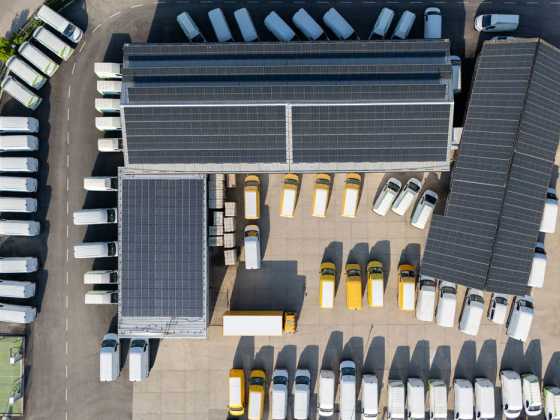Greening your fleet means investing for the future

With COP26 fresh in our minds, the environmental impact of your fleet will be high on your agenda. But electric vehicles are only part of the picture. Effective procurement, expert fleet guidance, telematics, driver training, tyre choice and charging infrastructure are all part of an efficient, cost effective and safe green fleet strategy. Holly Brooks from CCS shares some guidance
When sourcing a sustainable fleet you have a number of initial decisions to make. Do you want to purchase, lease or hire the vehicle? Thatcham Research reports that vehicle technology will progress more in the next five years than it has in the past 50 years. Innovations are happening very quickly and you may want to consider leasing as an alternative to outright purchase.
But, expert help is available. An agnostic, independent fleet manager can offer a ‘whole market’ view – working with you to identify a fleet procurement plan that meets your future needs.
As part of this service, you will be able to discuss vehicle availability. This is an important fact, especially in the current climate of vehicle shortages and longer lead times. You may want to create a shortlist of vehicles so that you have alternatives if vehicle availability does not align with your operational needs.
By taking time to plan and research thoroughly you will avoid wasted effort and delays in the procurement process. This is particularly important when transitioning to the unfamiliar specifications of electric vehicles where financial approval can be more time consuming.
Telematics
Electric vehicles benefit from cheaper routine maintenance with no oil, filters and other consumables (such as cambelts) to replace and maintain. Go Ultra Low found that, over three years and 60,000 miles, electric cars cost, on average, 23 per cent less to maintain.
But there are other costs associated with an electric fleet. Repairing can take longer and be more expensive. And repairs may require specialist technicians. But, again, with planning and preemptive action, you can find a cost-effective solution. If you maintain your fleet in-house you might consider using telematics and fleet management data.
This will help you to identify the most common driver incidents. You will then be able to find ways to prevent those incidents - saving time and money. Solutions may take the form of driver training. Or you may incorporate reversing cameras or other new specifications.
You will, certainly, be incurring upfront costs but the investment will help you to avoid future costly repairs and time lost when your vehicle is off the road. Again, expert guidance is available. A telematics or a fleet management supplier will help you to build a business case for this additional funding.
Tyres
It is also vital to select the correct tyres for an electric fleet. Tyres can often account for around 40 per cent of the maintenance budget for electric vehicles. The battery makes an electric vehicle much heavier. This additional weight, along with the instant torque, means that tyres on an electric vehicle will endure more wear and tear. Again, expert guidance is available from suppliers who can advise on the best tyres for your electric vehicle. Those suppliers will also give guidance on replacement profiling, specific requirements around tyre homologation - all helping you to budget effectively for future costs.
Tyres for an electric vehicle are, certainly, more expensive than traditional tyres but, again, they are a worthwhile investment. These recommended tyres are more durable and suited to the increased weight of the electric vehicle. And, in the long run, they will be cost effective.
Powering your fleet
When moving to an electric fleet, the design of the charging infrastructure will be critical. You will want to make sure that your fleet has enough power within the required range of travel – with access to the chargers and supply level needed.
As with electric vehicles generally, the charging infrastructure is a fast developing market. This can be challenging but, again, expert guidance is available. Fleet suppliers will be able to advise on your options. The suppliers can guide you on stand-alone feasibility studies and site surveys and on the management of works needed to increase capacity. They can also give guidance on how to work with the distribution network operators who own and operate the power lines and infrastructure that connect to the grid; on the supplier-funded network models that are available to employees and members of the public. And, finally, they can advise on the use of back office software that provides a full picture of your fleet network so that you can make sure that your vehicles always run at peak performance.
Accelerate your move to electric vehicles with CCS
Whichever stage of the vehicle lifecycle you’re tackling first in the transition to electric vehicles, we have the commercial solutions and expertise you need to set your strategy right.
For more information on our suite of Total Fleet Solutions, including our frameworks that provide options to help you meet your sustainability targets, visit our website.
Sign up to Crown Commercial Service’s Fleet newsletter for our latest news and industry insights or go to our Fleet Portal for quick quotations.






